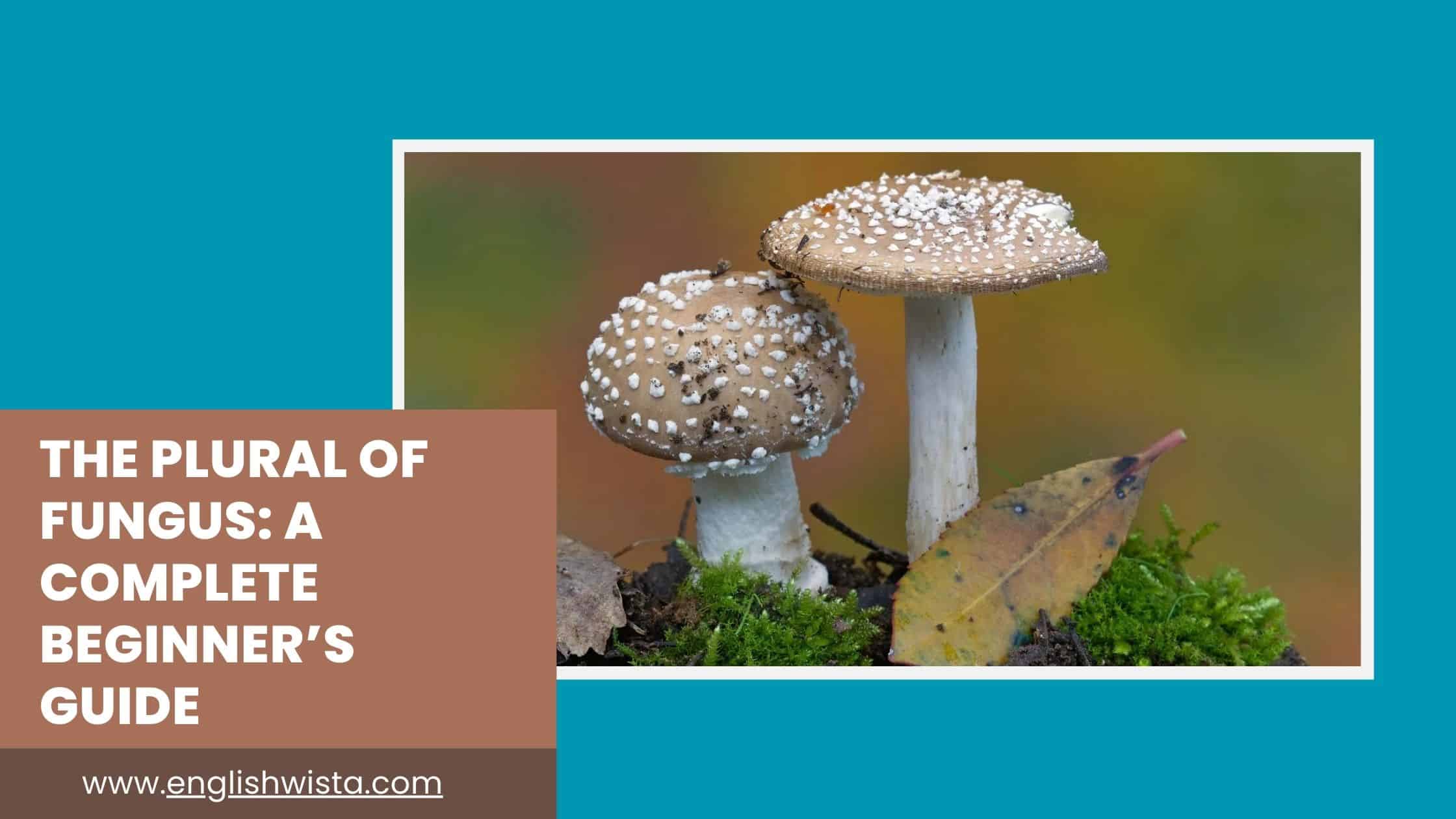Have you ever come across the word fungus and wondered, “Wait… what’s the plural of this word?” You’re not alone! Words like fungus can be a little confusing because they don’t always follow the usual English rule of just adding an -s at the end. But don’t worry we’ll break it down step by step in a fun, easy-to-understand way.
In this guide, we’ll explore what the plural of fungus is, why it looks a bit different from regular words, and how to use it correctly in real-life sentences. We’ll also share some interesting facts about the word and sprinkle in plenty of examples so you’ll feel confident using it the next time it pops up in conversation, reading, or writing.
So, let’s dive in and clear up the mystery of fungus once and for all!
What Does Fungus Mean?
Before we get to the plural, let’s quickly understand what fungus actually means.
A fungus is a type of living organism. It’s not a plant, not an animal, but its own unique category. Mushrooms, mold, and yeast are all examples of fungi (we’ll get to that word in just a moment!).
In simple words:
- A fungus is something like a mushroom or mold.
- It can grow in soil, on plants, or even on food.
- Some fungi are helpful (like yeast in bread).
- Others can be harmful (like mold on old bread).
So now that we know what a fungus is, let’s look at how to make it plural.
What Is the Plural of Fungus?
Here’s the answer you’ve been waiting for: the plural of fungus is fungi.
Yes, that’s right fungi (pronounced either fun-jai or fun-guy depending on where you’re from).
So instead of saying “many fungus,” we say:
- “many fungi”
It’s one of those words that doesn’t follow the normal pattern of just adding -s or -es. Instead, it follows a Latin rule, because the word fungus comes from Latin.
Examples:
- Correct: “The forest is full of fungi.”
- Incorrect: “The forest is full of funguses.”
But wait don’t worry too much. The form funguses does exist in English, and many people use it, especially in everyday conversation. However, fungi is the more widely accepted and standard plural in scientific and formal contexts.
Why Isn’t It Just Funguses?
Great question! Normally in English, we add -s or -es to make plurals. For example:
- Cat → Cats
- Dish → Dishes
But fungus is a borrowed word from Latin. In Latin, many words ending in -us change to -i in the plural.
Here are some similar examples:
- Cactus → Cacti
- Nucleus → Nuclei
- Focus → Foci
So, following that pattern, fungus becomes fungi.
Is Fungi Singular or Plural?
This is a common area of confusion. Let’s clear it up once and for all:
- Fungus = singular (one).
- Fungi = plural (more than one).
Examples:
- Singular: “This mushroom is a fungus.”
- Plural: “These mushrooms are fungi.”
Remember: If you’re talking about just one, use fungus. If you’re talking about more than one, use fungi.
Can You Say Funguses?
Here’s where things get interesting. The word funguses is not technically wrong. In fact, dictionaries list it as a valid plural form. But it’s much less common than fungi.
- Scientists, teachers, and writers usually prefer fungi.
- In everyday speech, some people say funguses because it feels more natural in English.
So, if you’re writing something formal or academic, go with fungi. If you’re just chatting with friends, funguses probably won’t confuse anyone.
Sentence Examples with Fungus and Fungi
Let’s practice with some examples so you can see how these words work in real sentences.
Using “Fungus” (singular):
- “That fungus on the bread looks disgusting.”
- “A single fungus can spread very quickly.”
- “This mushroom is a type of fungus.”
As “Fungi” (plural):
- “There are many fungi growing in the forest.”
- “Fungi play an important role in breaking down dead plants.”
- “Some fungi are edible, but others are poisonous.”
Using “Funguses” (alternative plural):
- “Scientists studied different funguses under a microscope.”
- “The damp basement is full of mold and funguses.”
(Again, fungi is preferred, but funguses is acceptable.)
Where Does the Word Fungus Come From?
The word fungus has its roots in Latin. In Latin, fungus simply meant “mushroom.” Over time, English borrowed the word and kept its plural form, fungi.
This is why English sometimes feels tricky it’s a mix of many different languages. When words come from Latin or Greek, they often bring along their unusual plural forms.
Other Words Like Fungus
To help you remember, here are some other words that follow the same -us → -i pattern:
- Radius → Radii
- Stimulus → Stimuli
- Alumnus → Alumni
- Cactus → Cacti
So, if you see a word ending in -us, check if its plural ends in -i. It’s not always true, but often it is.
Fun Facts About Fungi
Let’s lighten things up with some fun and fascinating facts about fungi:
- Fungi are everywhere! They live in soil, on plants, in the air, and even inside you.
- The largest living organism on Earth is a fungus. It’s a honey fungus in Oregon, USA, covering almost 4 square miles!
- Not all fungi are bad yeast (a fungus) helps make bread, beer, and wine.
- Penicillin, the famous antibiotic, was discovered from a fungus called Penicillium.
- Some fungi glow in the dark, a phenomenon called bioluminescence.
Cool, right? The more you learn about fungi, the more fascinating they become.
Quick Recap: Key Takeaways
Let’s quickly summarize what we’ve learned so far:
- Fungus = singular (one).
- Fungi = plural (many).
- Funguses = also plural, but less common.
- Fungi is the preferred plural in science and formal writing.
- The word comes from Latin, which explains its unusual plural.
How to Remember It Easily
Here’s a simple trick to remember:
- Think of the word guy.
- The plural is guys.
- Now remember: fungi sounds like fun-guy.
- So if you’re talking about more than one, it’s “fun guys” → fungi!
This little memory trick makes it easier to recall.
Conclusion
So, what’s the plural of fungus? The answer is fungi, though funguses is also acceptable in casual settings.
We learned that:
- Fungus is singular.
- Fungi is plural and the standard choice, especially in science.
- The word comes from Latin, which is why it looks unusual compared to regular English plurals.
Now, the next time you see mushrooms in the forest, mold on bread, or yeast in dough, you’ll know exactly how to describe them. You can confidently say, “Those are fungi!”
Language can be tricky, but once you break it down step by step, it becomes much easier. And who knows you might even impress your friends by explaining the plural of fungus the next time the topic comes up!
So, remember: one fungus, many fungi. Simple, clear, and fun just like learning should be.



